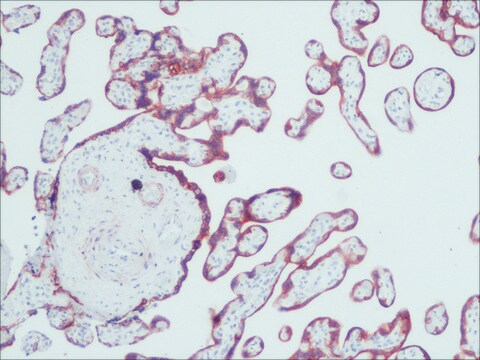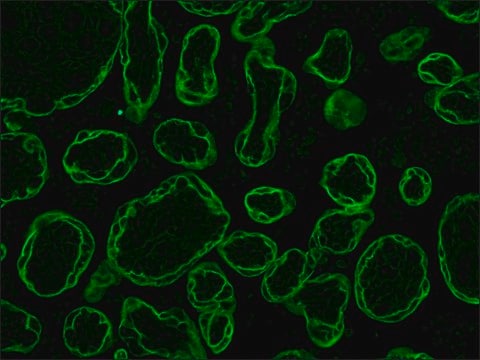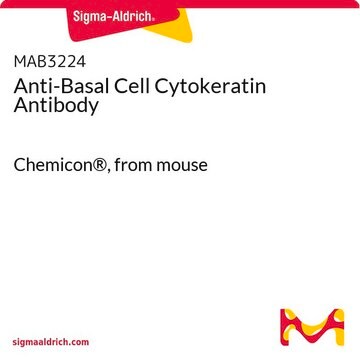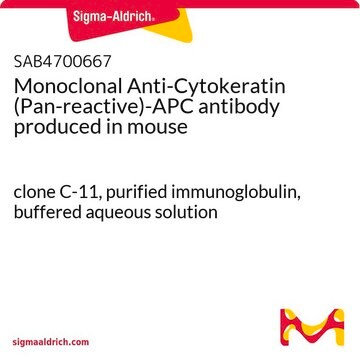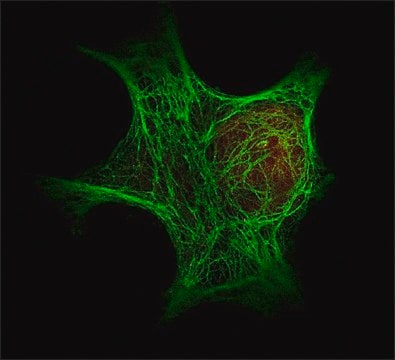F0397
Anti-Cytokeratin pan-FITC antibody, Mouse monoclonal
clone PCK-26, purified from hybridoma cell culture
Sinónimos:
Anti-CK16-Fluorescein isothiocyanate, Anti-FNEPPK, Anti-K16, Anti-K1CP, Anti-KRT16A, Anti-NEPPK, Anti-PC1
About This Item
Productos recomendados
origen biológico
mouse
Nivel de calidad
conjugado
FITC conjugate
forma del anticuerpo
purified from hybridoma cell culture
tipo de anticuerpo
primary antibodies
clon
PCK-26, monoclonal
Formulario
buffered aqueous solution
técnicas
direct immunofluorescence: 1:25 using formalin-fixed, paraffin-embedded sections of human or animal tissues
immunohistochemistry (frozen sections): suitable
Condiciones de envío
dry ice
temp. de almacenamiento
−20°C
modificación del objetivo postraduccional
unmodified
Descripción general
Especificidad
Inmunógeno
Aplicación
- immunohistochemistry
- staining chicken intestinal cells
- immunofluorescence staining
Forma física
Cláusula de descargo de responsabilidad
¿No encuentra el producto adecuado?
Pruebe nuestro Herramienta de selección de productos.
Código de clase de almacenamiento
10 - Combustible liquids
Clase de riesgo para el agua (WGK)
nwg
Punto de inflamabilidad (°F)
Not applicable
Punto de inflamabilidad (°C)
Not applicable
Equipo de protección personal
Eyeshields, Gloves, multi-purpose combination respirator cartridge (US)
Elija entre una de las versiones más recientes:
¿Ya tiene este producto?
Encuentre la documentación para los productos que ha comprado recientemente en la Biblioteca de documentos.
Los clientes también vieron
Nuestro equipo de científicos tiene experiencia en todas las áreas de investigación: Ciencias de la vida, Ciencia de los materiales, Síntesis química, Cromatografía, Analítica y muchas otras.
Póngase en contacto con el Servicio técnico

